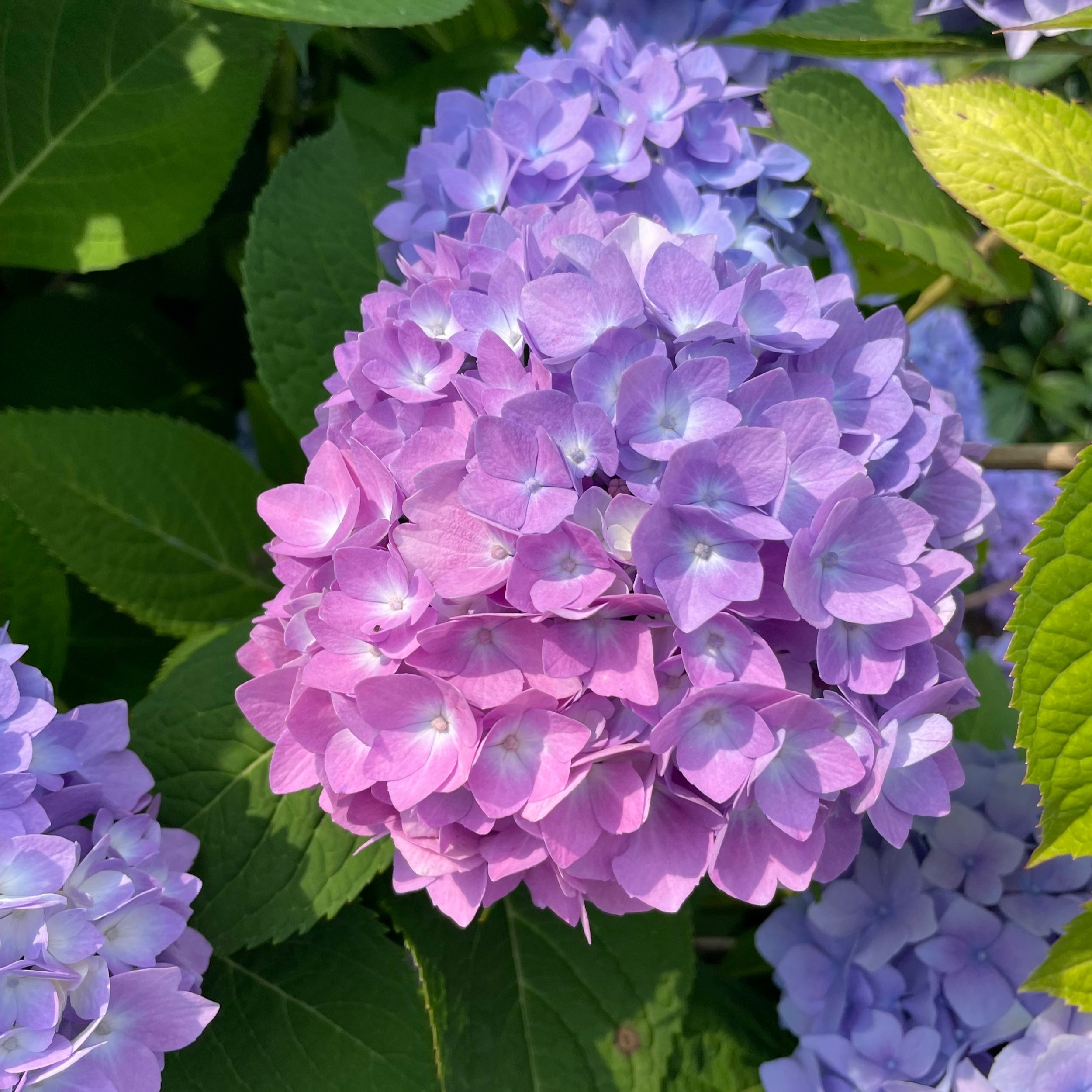How to: prune your macrophylla hydrangeas
Two of my endless summer bigleaf hydrangeas in 2024. Believe it or not, these hydrangeas are only pruned every 3-4 years. I like them big and full!
How to Prune Hydrangea macrophylla Plants : A Step-by-Step Guide for Healthy Blooms
If you’re a gardening enthusiast, you’ve likely encountered the stunning beauty of Hydrangea macrophylla —commonly known as bigleaf hydrangea. With its large, vibrant blooms and lush foliage, this plant is a showstopper in any garden. In this guide, we’ll walk you through when, why, and how to prune macrophylla to ensure healthy growth and abundant flowers.
Do You Have To Prune Macrophylla Hydrangea?
Nope!!!!! Really! I promise! Pruning is a maintenance task for macrophylla when you need to adjust the size and shape of the plant. Popular varieties include mophead and lacecap hydrangeas (endless summer, blushing bride, Nikko blue…).
Regular pruning helps:
Maintain shape and size: These hydrangeas can become leggy or overgrown without proper care.
Improve plant health: Pruning eliminates diseased or damaged branches, reducing the risk of pests and disease.
Unlike some hydrangea species, macrophylla blooms on old wood—meaning the buds for next year’s flowers form on the previous season’s growth in August/September. This makes timing and technique crucial to avoid accidentally cutting off future blooms. If you’re happy with the size and shape of your bigleaf hydrangea, just leave it alone.
When to Prune Macrophylla Hydrangea
Timing is everything when pruning macrophylla hydrangea. The best time to prune is late summer to early fall, typically from late July to early September, after the plant has finished blooming. Here’s why:
Pruning right after flowering allows the plant to set buds for the next season.
Waiting until late summer avoids disrupting the current year’s blooms while giving the plant time to recover before winter.
Avoid pruning in late fall or early spring, as this can remove the old wood where next year’s flower buds are developing. If you’re unsure about which type of hydrangea you have, read this.
Tools You’ll Need
Before you start, gather these essential pruning tools:
Sharp, sanitized pruning shears (bypass pruners work best. My favorite are the Felco #2 Bypass Pruners, but Fiskars Bypass Pruners work well too )
Loppers (for thicker branches)
Gardening gloves
Disinfectant (to sterilize tools between cuts. For how to sanitize your tools, read this)
Keeping your tools clean and sharp ensures clean cuts that heal quickly, minimizing stress on the plant.
How to Prune Macrophylla Hydrangea: Step-by-Step
Follow these simple steps to prune your macrophylla hydrangea like a pro:
Assess the Plant
Start by inspecting your hydrangea. Look for dead, damaged, or diseased branches.Remove Dead or Damaged Wood
Using your pruning shears, cut away any brown, shriveled, or broken stems. Cut these back to the base of the plant. This encourages new growth and improves airflow.Thin Out Overcrowded Stems
If the center of the plant looks dense, selectively remove older, weaker stems. Aim to open up the shrub, allowing light and air to reach the interior. Cut these stems back to the base or to a healthy lateral branch.Shape the Plant (Optional)
If your hydrangea is getting too large or leggy, lightly trim back the longest stems to maintain its shape. Avoid cutting more than one-third of the plant’s total growth to prevent stress.Clean Up
Remove all clippings from around the base of the plant.
One endless summer bloom in 2022.
Common Pruning Mistakes to Avoid
Pruning Too Late: Cutting in late fall or spring can remove next year’s flower buds. Stick to late summer pruning, ideally late July or August for best results.
Over-Pruning: Taking off too much growth can weaken the plant. Never remove more than one-third of the shrub in a single season.
Ignoring Old Wood: Since macrophylla blooms on old wood, aggressive cuts can lead to a bloomless season.
Special Care Tips for Macrophylla Hydrangea
Fertilizing: After pruning, apply a balanced fertilizer (like 10-10-10) to support new growth.
Watering: Keep the soil consistently moist but not waterlogged, especially after pruning.
Mulching: Add a layer of organic mulch around the base to retain moisture and protect roots heading into winter.
Troubleshooting: Why Isn’t My Macrophylla Hydrangea Blooming?
If your hydrangea isn’t producing flowers, pruning habits might be the culprit. Other factors include:
Incorrect Timing: Pruning at the wrong time may have removed flower buds.
Too Much Shade: Macrophylla hydrangea prefers partial shade—too much sun or shade can reduce blooms.
Soil pH: While pH and availability of aluminum in soil affects bloom color (blue in acidic soil, pink in alkaline), nutrient imbalances can also limit flowering. Test your soil and adjust as needed.
Conclusion
Pruning macrophylla hydrangea doesn’t have to be intimidating. With the right timing—late summer after blooms fade—and a gentle approach, you can keep your hydrangea healthy, shapely, and bursting with flowers every year. Follow this step-by-step guide, avoid common mistakes, and enjoy the rewards of a thriving bigleaf hydrangea in your garden.
Ready to grab your pruners? Your hydrangeas will thank you with a spectacular show next season!
Keywords: prune macrophylla hydrangea, how to prune bigleaf hydrangea, hydrangea pruning guide, when to prune hydrangea macrophylla, hydrangea care tip, endless summer hydrangea pruning
Unrivaled beauty. An almost-fully opened hydrangea flower. Part of a second flush of blooms in August on my Endless summer hydrangea.


